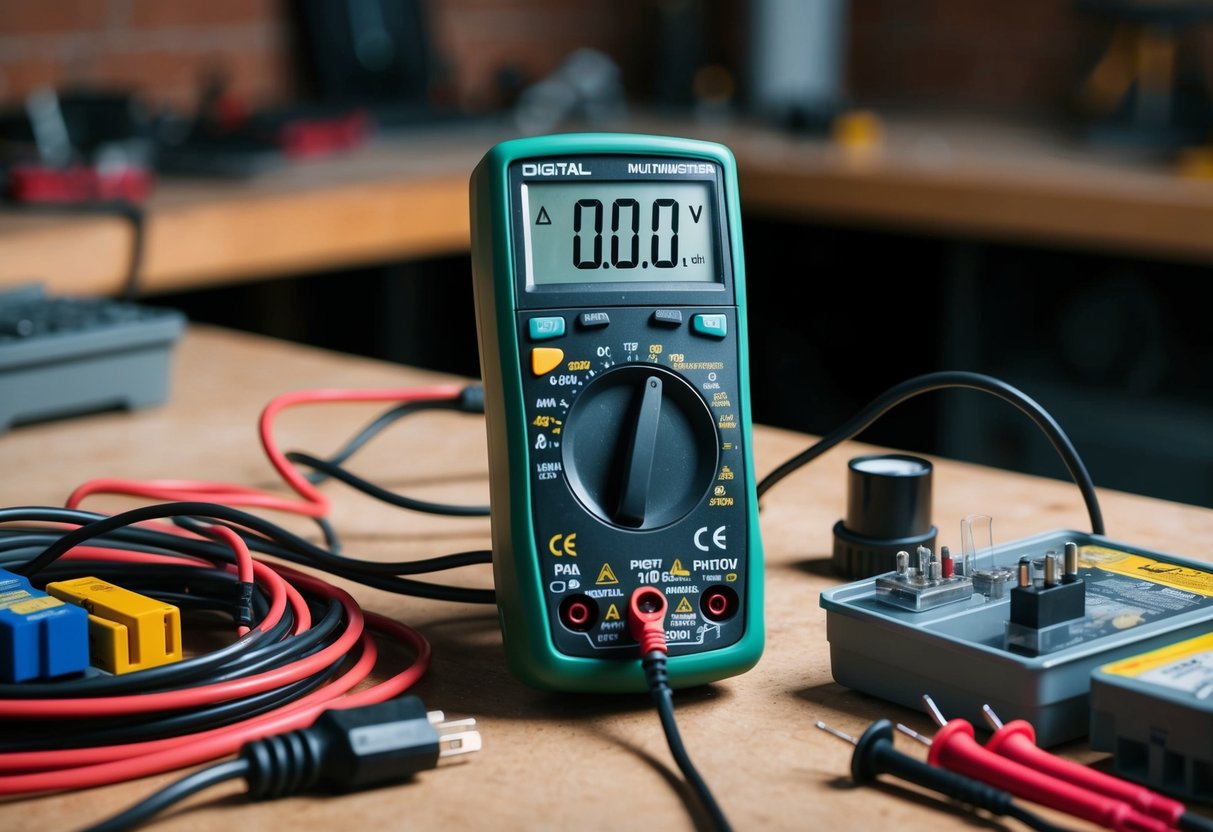Reviewing Best Digital Multimeters: Accurate, Reliable, Tech-Savvy
Key Specifications and Features

Digital multimeters provide precise measurements for various electrical parameters. Their versatility includes measuring DC and AC voltage, assessing resistance and capacitance, along with frequency and bandwidth capabilities. These features make them indispensable tools for both professionals and hobbyists.
Measuring DC and AC Voltage
Digital multimeters offer range and accuracy for DC and AC voltage measurements. They accommodate a wide range of voltages, often reaching up to 1000 V. Accuracy is important, with most multimeters featuring an accuracy of around ±0.5% for DC voltage. AC voltage measurements might have slightly less precision, often around ±1%. Auto-ranging functionality allows for faster and error-free measurements by automatically selecting the correct range for a given task, enhancing usability and efficiency.
Assessing Resistance and Capacitance
A critical function is the accurate measurement of resistance, supporting resistance of up to 50 MΩ in many models. The precision is often within ±1%, which satisfies most practical applications. Capacitance features are critical for tasks involving capacitors, allowing measurement ranges from picofarads (pF) to several millifarads (mF). Auto-discharge functionalities prevent possible damage by safely releasing stored energy, ensuring accuracy and user safety.
Frequency and Bandwidth Capabilities
Frequency measurement capabilities are crucial, especially in applications involving signals and electronics. Standard measurement ranges often span from a few hertz to several megahertz. Bandwidth capabilities potentially extend up to 100 kHz, aiding in analyzing fast-changing signals with consistency. These features provide flexibility important for ensuring compatibility with various tasks. This makes digital multimeters versatile in laboratory and field settings, where consistent and reliable measurements are critical.
Accuracy and Precision
When assessing digital multimeters, the focus on accuracy and precision ensures reliable measurements. Accuracy reflects how close the measurements are to the actual value, while precision describes the repeatability of the results. Both aspects are vital for users who need dependable readings.
Understanding Accuracy in Measurements
Accuracy in digital multimeters is crucial for determining the true value of a measured quantity. It indicates how close the reading is to the standard or known value. Manufacturers often specify accuracy as a percentage of the reading plus a number of counts.
For example, a multimeter with an accuracy of ±(0.5% + 2 counts) ensures that measurements remain within this range of the true value. This specification involves both relative and fixed errors. An accurate reading helps ensure that the device’s results align with expected standards, providing users with confidence in their devices.
Precision and Its Importance in Multimeters
Precision refers to a multimeter’s ability to produce consistent results over repeated measurements. It doesn’t necessarily mean those results are accurate, but rather they are consistent. Precision is crucial when performing multiple tests where repeatability is key.
High precision indicates stable performance, which is essential in laboratory settings where consistency is mandatory. Multimeters with high precision often feature advanced components that help in minimizing variations across measurements. This characteristic is beneficial for tasks that require consistent measurements to compare values over time. Precision in multimeters reassures users of the instrument’s reliability in producing repeatable results.



